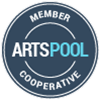After a several-year hiatus, iLAND relaunched its symposia series with this new retreat, moving with pause, in May/June 2021. Through regular meetings on zoom and select in-person meetings with participants local to NYC and Puerto Rico, 18 practitioners engaged in interdisciplinary practice to consider racial equity and environmental justice across communities transformed by COVID.
The retreat culminated in a hybrid in-person/virtual workshop where dance performances were shared to the general public. Seven of the contributing artists presented the next stages of their work in a via performance format, titled Partitura / Particular / Participar, in September 2021 at WeisAcres.
moving with pause is made possible by the New York State Council on the Arts with the support of the Office of the Governor and the New York State Legislature. This program is supported, in part, by public funds from the New York City Department of Cultural Affairs in partnership with the City Council.
